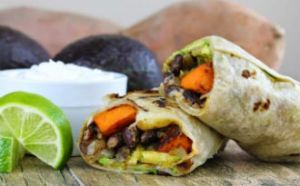Break the habit in the kitchen
When it comes to food, we can all be guilty of choosing the quick and easy options. From takeaways and microwave meals to frozen dinners, with so many cheap meals on offer, it hardly seems worth prepping anything from scratch. Put simply, you want to fill a hole fast. This may seem like the right thing to do but did you know that prepacked food is generally higher in saturated fats, salt, preservatives and additives, which can contribute to health problems such as heart disease, obesity and more.
Of course, once in a while doesn't hurt. Life is about balance but you could change your cooking and eating habits without going back to the drawing boards. Here are our top tips on small changes that could have a big impact in how you cook and eat:
Change your cooking methods
One of the easiest ways to cut the calories and ditch the fat is to grill, bake or steam food rather than fry, deep fry or roast. Your meal will instantly be healthier and lighter. If you're worried about flavour, try adding herbs and seasoning. Remove all visible fats from meat and choose leaner cuts. Remove the skin from meats (where possible).
Pack in the veg and pulses
One of the easiest ways to make a change is to add more veg and pulses. If you want to make a healthy dish, stir fry is an easy option when you're short on time. To make the most of it, use minimal oil and toss the ingredients quickly using a wok. Add lots of extra vegetables to bulk out the dish, add flavour and texture. Ideally, you want the veg to be crisp and not soggy. Bulk out stews with beans or lentils and vegetables. Adding some starchy carbohydrates or protein to soups or stews will help you stay fuller for longer and less likely to snack in between meals.
Think seasonally
Try to use fresh seasonal fruit and vegetables if possible – they taste better and are cheaper in season. But remember that frozen or tinned vegetables (in natural juice or water) are almost as good and add nutritional value to your dinner. Whether in pasta sauce or stir fry, always have some in stock at home for a healthier family dinner.
Add colour
Incorporate as much colour as possible with your fruit and vegetables as colours mean you're eating plenty of vitamins and minerals. If it's easy to remember, try thinking of your plate as eating a rainbow of fruit and veg. We need as much variety as possible to help keep us healthy and full of life.
Go easy on your portion size
If you're struggling to lose weight or shift a few pounds, take a look at the amount you're eating. No matter what you eat, it's important to be aware of how much you are consuming. Even if it's healthy, your portion size may be too large. The easiest way to check your portion size is to weigh it. For example, the recommendations are 75g of dried rice or pasta per person. If you cook extra, you will probably end up eating it.
Divide your plate
To ensure you're eating enough veg, divide your plate and fill half with vegetables, or have a side salad. If you're tempted by dessert, start your meal with a small salad or soup to help fill you up.
Add strong flavours
You don't have to forgo cheese or rich treats just go for a higher quality that will fill you up faster. Take cheese, for example, try a strong flavour so you can't eat that much or try grating it so it goes a little further. Use herbs and spices to add flavour rather than sauces, mayonnaise or salad dressings which add extra calories.
Make healthy swaps
When it comes to cooking, you can still eat the same types of foods just make them healthier. Take chips: swap deep-fried chips for oven chips – again, weigh a portion for each person and don’t go by eye. When making gravy, you can skim the fat off the meat tray or use granules instead. Go for wholegrain/whole wheat bread, pasta and rice – they are more filling, and have more nutrients and more fibre, so keep you feeling fuller for longer than the white versions. If you have to use oil; choose mono or poly-unsaturated oil, limit to one teaspoon per person or try a spray oil. Replace cream with yoghurt or go for tomato-based sauces instead. Use semi-skimmed milk instead of full fat wherever possible (skimmed if you can tolerate it).
Be mindful about eating
Think before you eat. Instead of mindlessly eating, ask yourself if you are really hungry. Can't help nibbling while cooking? Try vegetable sticks or fruit, not chunks of cheese, which can undermine all your hard work. If you're still hungry straight after a meal, wait 20 minutes before having anything else to eat. By then you may find you're not hungry anymore. Eat your food slowly, chewing properly. Sit at a table rather than having the meal in front of the television and enjoy. Ditch unnecessary accompaniments from meals, so no
garlic bread with spaghetti bolognese or pasta, no naan or Bombay potatoes with your curry, no prawn crackers or spring rolls with your stir fry.

